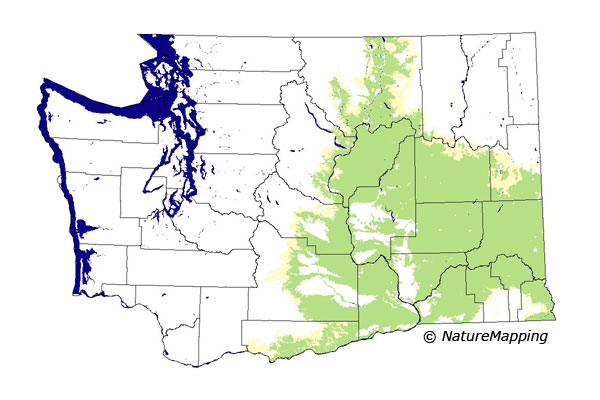GAP Analysis Predicted Distribution Map
Small-footed Myotis (Myotis ciliolabrum)
Species Code: MYLE
|
Legend:
 = Core Habitat = Core Habitat
 = Marginal Habitat = Marginal Habitat
Breeding Range Map
The green area shows the predicted habitats for breeding only. The habitats were
identified using 1991 satellite imagery, other datasets and experts throughout the state, as part of the Washington Gap Analysis
Project.
Click to enlarge distribution map
Map with historical museum records
|
Metadata
(Data about data or how the map was made)
A bat of open country; probably not found in cities but may be on town outskirts. Forages along cliffs, rock outcrops,
and dry slopes in arid valleys and badlands. Roosts in cliff cavities, boulders, vertical banks, the ground, talus slopes,
and under rocks. Several records away from the deep canyons suggest that this species is not as closely tied to lakes and
rivers as most of the other bats in the Columbia Basin.
All steppe zones were core; peripheral in Ponderosa Pine and Oak zones. Good habitats were non-forested, bare ground,
dryland agriculture, rivers, and lakes.
Translated from the Washington Gap Analysis Mammal Volume by Dave Lester
Webpage designed by Dave Lester

 = Core Habitat
= Core Habitat = Marginal Habitat
= Marginal Habitat